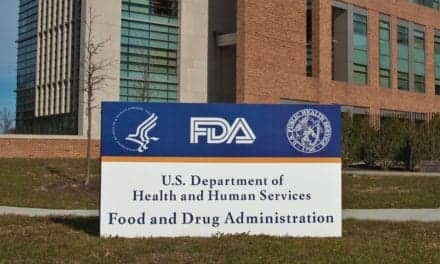Surgical biopsy can be crucial to tracking the damage of disease and infection in the body, but the procedure can take its own toll on the patient. Now, a Cornell-led collaboration has developed a noninvasive blood test that uses cell-free DNA to gauge the damage that covid-19 inflicts on cells, tissues and organs and could help aid in the development of new therapies.1
“A lot of what we’ve learned about the involvement of the virus with different organs is from invasive biopsies, postmortem biopsies,” says Iwijn De Vlaminck, PhD, an assistant professor in the Meinig School of Biomedical Engineering at Cornell. “But a liquid biopsy is potentially very useful as a biological measurement, a way to study what is going on in patients who have different types of symptoms, for example. It could be used to assess disease severity and help stratify patients in the care system. “It could also potentially be a surrogate biomarker that you could include in randomized controlled trials of various anti-covid therapies and antivirals.”
For several years, De Vlaminck and doctoral student Alex Cheng have explored the biomedical applications of cell-free DNA—dead fragments of DNA that drift around the bloodstream and urine. The fragments are relatively easy to collect via the body’s plasma. By profiling the DNA molecules and logging the occurrence of methylation marks—a chemical modification that results from the expression of different genes—the researchers can follow the fragments, much like trail of breadcrumbs, back to the source of injury or infection.
In 2019, they developed a test that used the technique to identify the presence of urinary tract infections in kidney transplant patients while also quantifying the degree of damage to the kidney and bladder.2
As the covid-19 pandemic emerged, the researchers realized their test could help search out and quantify the impact of the new disease on patients’ lungs and other organs and tissues.
Working with partners at McGill University and the Dana-Farber Cancer Institute, the researchers profiled 104 plasma samples from 33 covid-19 patients, then compared the results with patients who had other viral infections, as well as healthy controls.
As expected, they found evidence of injury to the lungs as well as the liver among the covid-19 patients. More surprisingly, they noted an increase in DNA from red blood cell progenitors and found that a high concentration of cell-free DNA in the blood was itself a strong prognostic marker for severe covid-19 cases.
“The total concentration of the free DNA in blood is something that can be measured pretty quickly,” De Vlaminck says. “If you’re not interested in figuring out where it’s coming from, or using complex genomic assays, it’s potentially useful for preclinical diagnostic workflows and workups because it can be integrated fairly easily.”
While liquid biopsies are often utilized in connection with cancer, they remain understudied in other diseases, Cheng says. “When there’s a new virus that emerges, it’s not always clear what to look for. Clinicians are looking for specific injury to the kidney or to the liver or the lungs. I think that an unsupervised assay like ours during a pandemic setting, when we don’t really know much about what’s going on, is important because it’ll tell us where we can start to look for more information.”
References
1. Cheng AP, Cheng MP, Gu W, et al. Cell-free DNA tissues-of-origin by methylation profiling reveals significant cell, tissue and organ-specific injury related to covid-19 severity. Med N.Y. Epub. January 16, 2021. doi:10.1016/j.medj.2021.01.001.
2. Cheng AP, Burnham P, Lee JR, et al. A cell-free DNA metagenomic sequencing assay that integrates the host injury response to infection. Proc Natl Acad Sci USA. 2019;116(37)18738-18744. doi: 10.1073/pnas.1906320116.





